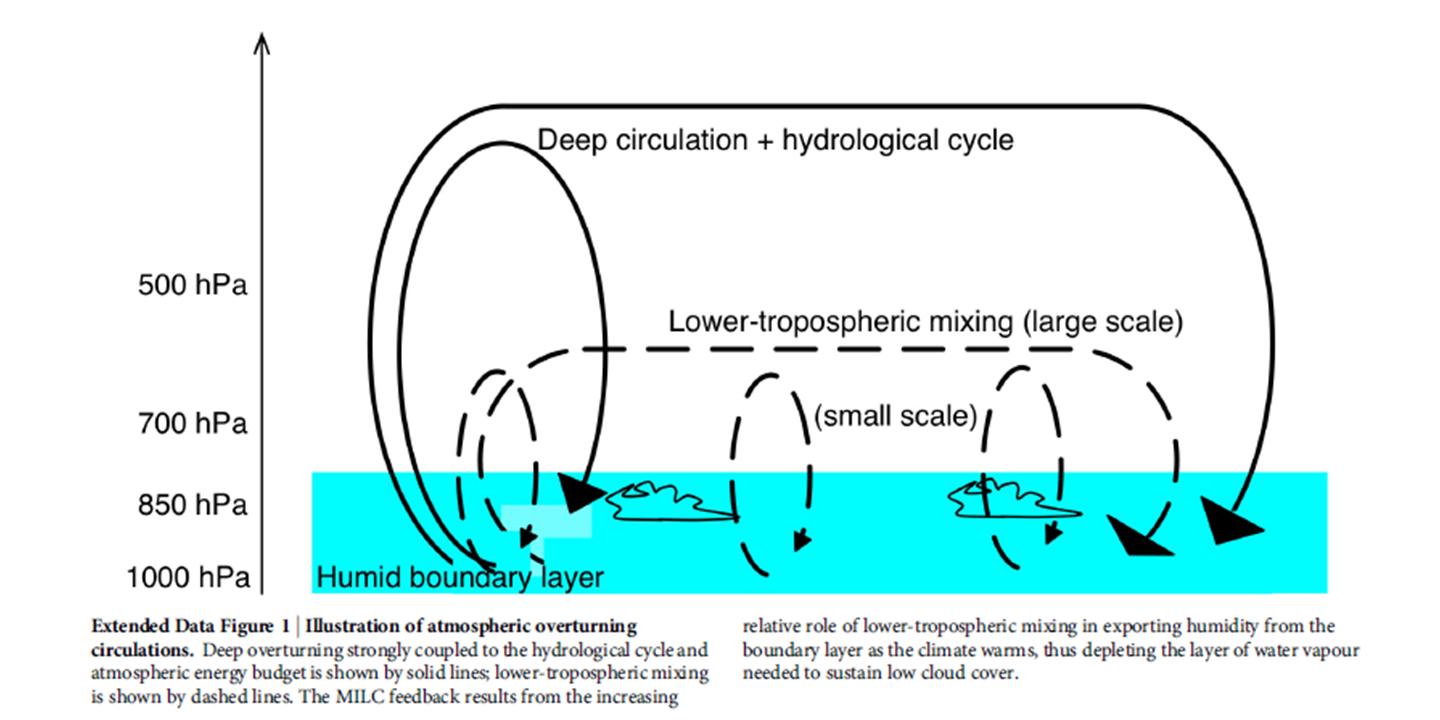This is the first paper in a long time that made my brain hurt to read.
“Spread in Model Climate Sensitivity Traced to Atmospheric Convective Mixing“, by Sherwood, Bony, and Dufresne is actually quite well written (Nature editors help to make sure scientists don’t publish bad prose in their magazine). But the concepts involved are pretty complicated, which is what happens when you try to understand atmospheric convection.
Basically, the authors claim to show that a significant amount of the spread in the climate sensitivity across dozens of climate models is due to how the models partition tropical convection between deep versus shallow convective mixing.

Although I don’t yet fully understand their reasoning, they claim these differences impact low cloud amounts, and thus low cloud feedback in the models. Low cloud feedback is arguably the least certain feedback in models, capable of either greatly amplifying or reducing the small direct warming from more CO2 in the atmosphere.
The authors present evidence that those models which have the strongest shallow mixing are the closest to the observations. Furthermore, since those models also exhibit the strongest positive low cloud feedback, we should believe the predictions of the models that predict the most warming for the future.
(What’s that you say? You thought the models with the most warming were also the ones which have failed most miserably in their temperature predictions over the last 30+ years? Ha! You silly mortal! The Climate Modelers now have a new, complex diagnostic quantity to test models with…not that silly old temperature metric.)
The paper does seem to provide some new and important insight into why different climate models have different strengths of low cloud feedback. But I suspect their “observational evidence” of just how strong shallow mixing in the real tropical atmosphere is (the MERRA reanalysis model) is, in this case, more model than it is observation. We don’t really have direct observations of the average strength of tropical lower tropospheric mixing. And even if it is true that the most sensitive models have the most realistic lower tropospheric mixing, there are so many different compensating (and highly parameterized!) processes in models, I don’t think we can use such model diagnostics as reliable tests for climate sensitivity. At least not yet.
So, for the time being, I’m sticking with the simpler tests…such as simple energy conservation and just how much the ocean/atmosphere system has warmed in the last 50 years.
The paper thus represents a bold prediction in the face of contrary evidence. So I give Sherwood et al. 5 stars out of 5 in the much-coveted cojones category.

 Home/Blog
Home/Blog



